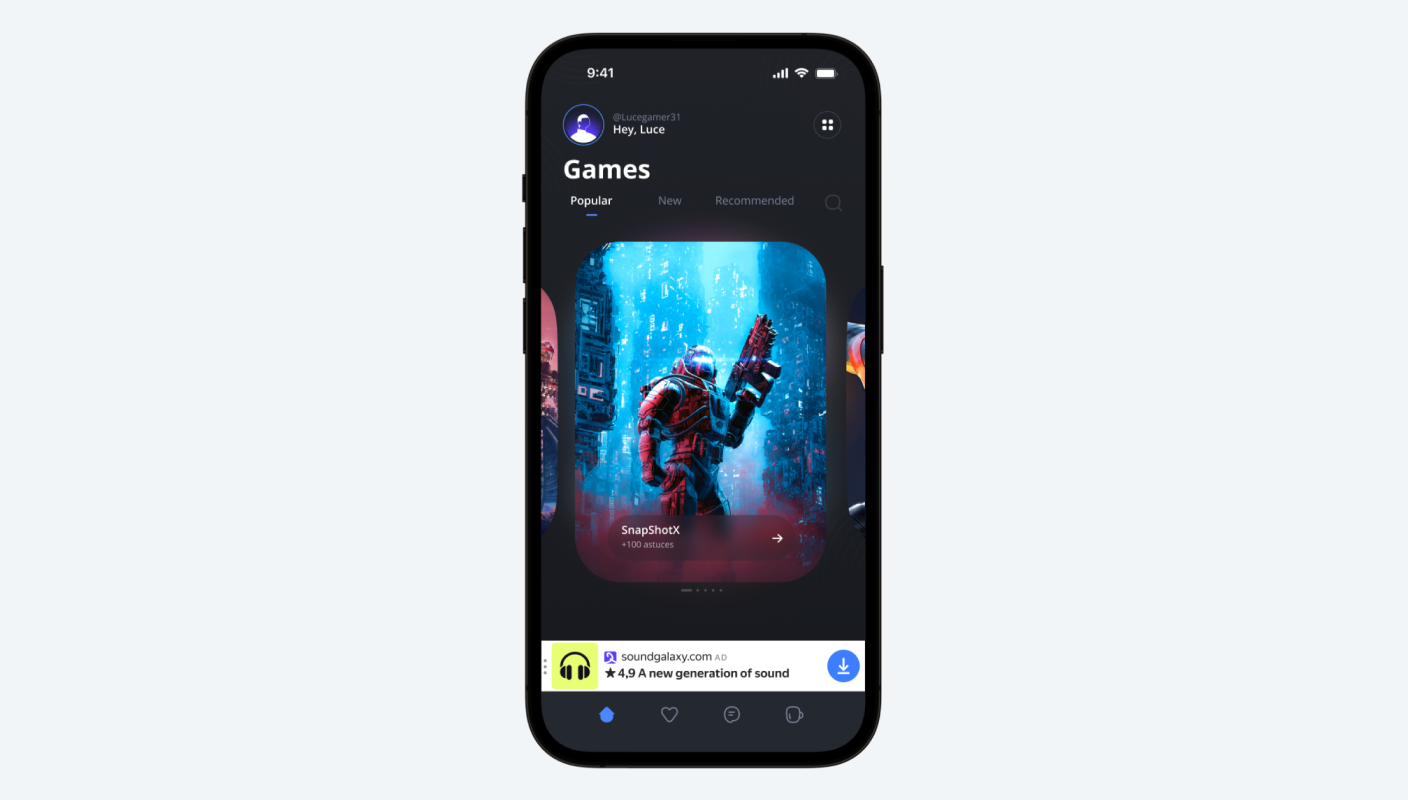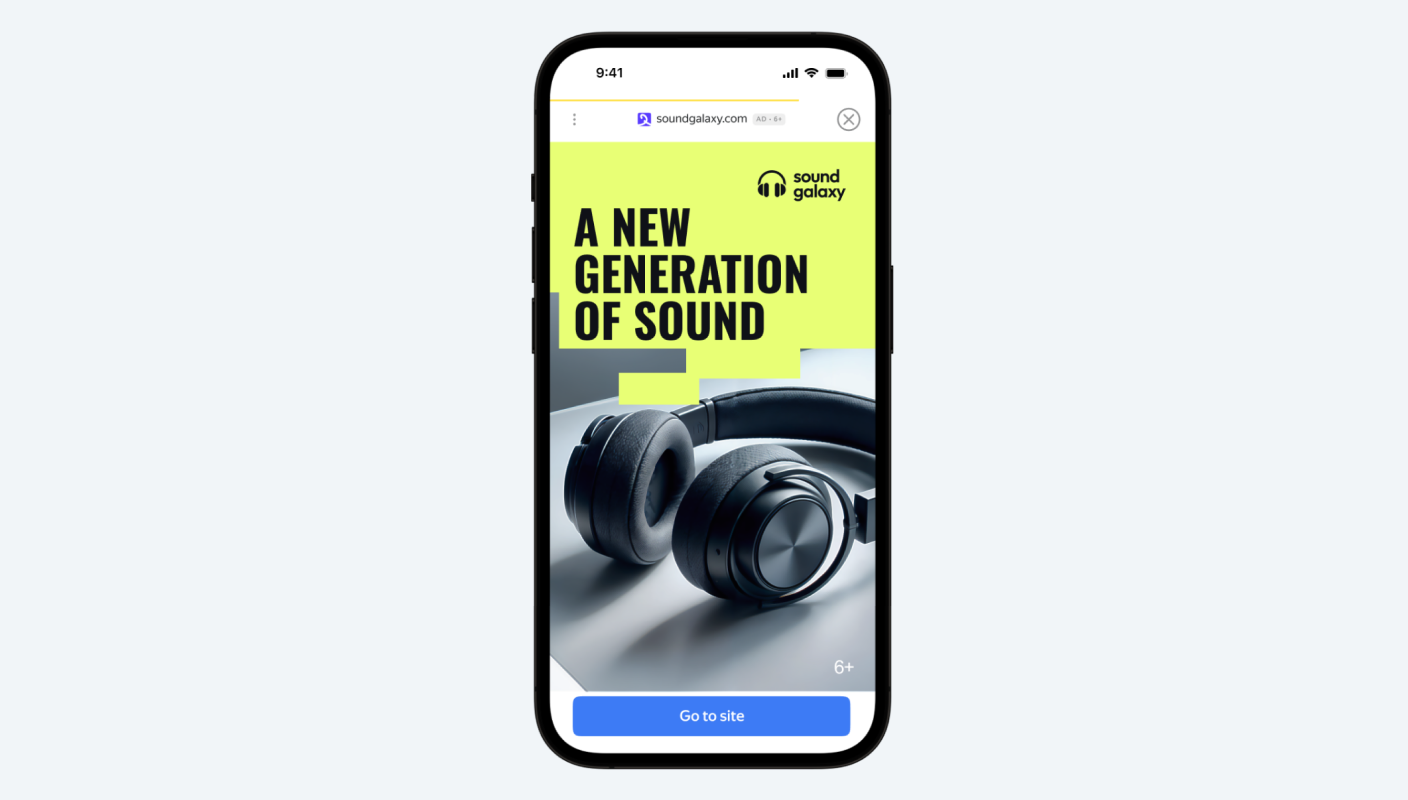Ad monetization: key metrics for revenue growth

With living costs rising, people are becoming more cautious with their spending. A PwC survey showed that more than half of global consumers are cutting back on non-essential purchases, and 15% have stopped spending money on discretionary items entirely.
For app owners, this shift makes relying on in-app purchases more uncertain. That’s why ad monetization is now the preferred method, with 31% of apps running ads. Even Netflix adopted an ad-supported plan, which shows that this approach has staying power.
Here, we’ll look into how you can track your in-app ad performance and make sure it’s delivering results.
What are the KPIs in in-app advertising?
Key performance indicators (or KPIs) for in-app advertising are quantifiable metrics that measure the performance of your app. If you define your goals, you will set a clear direction for your strategy, tracking, and analytics. It’ll also help define the metrics you should track to evaluate your app revenue success.
KPIs vs. metrics: Understanding the key differences
Since people mix up ‘KPI’ and ‘metrics’, let’s first define them:
- KPIs show whether a business objective is successful.
- Metrics are the data points used to track your progress toward the goal.
By themselves, metrics don’t offer many insights without the context provided by a well-defined KPI. For example, if your goal is to grow your in-app ad revenue by, say, 10% in 7 days, it’s a clear KPI with a set target and timeframe. Here, ad displays are the metric that tracks your progress.

Grow your revenue without the extra work
Discover where digital advertising is headed next
Measuring in-app ad performance using KPIs
In-app advertising is one of the most effective monetization strategies for app owners today. It provides a reliable revenue stream and helps you maximize your earnings without relying solely on in-app purchases. Tracking key performance indicators (KPIs) is essential for fine-tuning your monetization strategy by providing clear goals.
Since KPIs offer concrete data, you can check whether your approach to in-app ads is working and make changes to boost revenue. Additionally, these metrics help you understand how ads impact engagement and retention, allowing you to refine your strategy to increase earnings and keep users happy.
Key metrics to track
When you start monetizing, these are the key metrics to track:

Ad Revenue
Ad revenue provides an aggregated overview of the entire revenue stream generated from ads. For app owners, ad revenue helps you measure the overall effectiveness of your strategy. It includes revenue from banner ads, interstitials, video ads, and any other monetized content.
But don’t think of ad revenue as a single number. You’ll also want to break it down by factors, including geographic performance and ad format. This way, you’ll know which areas are working and where you might need to tweak your strategy for better returns.
eCPM (Effective Cost Per Mille)
eCPM is a combined measure from the advertising network that shows overall revenue relative to impressions. eCPM gives an overview of how much income is generated per 1,000 ad impressions.
To calculate eCPM, use this formula:

To improve eCPM, you can adjust ad formats and placements or add more networks to your app. You can also set eCPM floors to make sure you only receive ads that meet a minimum price threshold.
However, eCPM varies by region. For example, emerging markets tend to have lower eCPM than more established regions. That’s because different networks and advertisers work better in different locations.

Monetize your app in high-growth markets
ARPDAU (Average Revenue Per Daily Active User)
This metric measures the revenue generated by each active app user daily. It’s great for measuring how certain ads affect the user experience and identifying your primary source of ad revenue. Calculate ARPDAU with this formula:

ARPDAU essentially shows how much you can allocate to user acquisition based on ROAS (Return on Ad Spend). It reflects both user acquisition costs and revenue from monetization. For example, in hypercasual games, where the goal is to acquire a large number of users quickly, the indicator helps assess profitability.
Fill Rate
This measures the percentage of ad requests fulfilled by an ad network. To calculate it, divide the number of ad impressions an app shows by the number of times the app requests an ad from the network:

It’s great for tracking ad network performance.
A high fill rate is ideal; it’s best if it’s 100%. If it drops below 90%, it’s time to take a closer look. One reason could be that the ad network can’t fulfil the ad inventory of your app, which lowers your fill rates (and revenue). To fix this, you can add more ad networks – in case one doesn’t work, another one can act as a backup.

Need help juggling multiple ad networks?
Another potential reason is that the eCPM floor is too high, which blocks the network from showing ads. Lowering it should help, but don’t go too low.
Also, at the individual level, benchmarks tend to be lower. Some placements may face limited competition or could have higher eCPM floors in the waterfall setup (a strategy where ad networks are called in sequence, with each one used if the previous can’t fill the space). Monetization managers need to fine-tune eCPM floors, adjust their waterfall strategies, and pick the right networks to maximize ad revenue.
Engagement Rate (For Rewarded Ads)
The engagement rate shows what percentage of active users interacted with or viewed an ad at least once in a given period. It helps you understand how users are reacting to your content, how well your placements are generating impressions, and how much they might be disrupting the experience. This is especially important for rewarded ads, where user interaction is key.
If your engagement rate is low, it could mean users aren’t interacting with your ads as expected. Try placing them in areas where users are more likely to see them.
If you’re already seeing success with purchases and adding ads to your strategy, focus on achieving the right balance. When your current setup is working well, be careful not to overdo it. Too many ads may actually hurt your purchase metrics.
Ad Impressions
Ad impressions are the total number of times an ad is shown to users. This is affected by your app’s user base, how engaged your users are, where the ads are placed, and how often users actually see them.
- Served impressions happen when the ad is sent from the app to the server to be shown to users.
- Viewable impressions only count when at least one pixel of the ad shows up on the user’s screen — that’s what the user actually sees.
- Show rate is the ratio of served impressions to viewable impressions. It tells you if your ads are being displayed properly, and it determines if they’re in the right spots and are visible enough.
If you notice that your ad impressions are lower than the selections made by the advertising networks, it’s time to double-check the ad display. These metrics will help you pinpoint where things might be going wrong and get things back on track.
Before You Go
KPIs define your approach to tracking monetization goals. They can be engagement-, revenue-, or ad performance-focused, depending on your campaign goals. Also, bear in mind that the metrics discussed here are important, but they’re just one part of a bigger growth strategy.
Each KPI uses metrics to measure your progress and offer data-driven insights. You can use this information to make more informed decisions around optimizing your monetization. However, to do this, you also need app analytics to track and analyze the advertising data.
Ad networks address this by providing analytics tools to view your performance data in real time. For example, Yango Ads Ad Network offers a comprehensive analytics dashboard to track in-app advertising performance using custom dashboards and reports.


